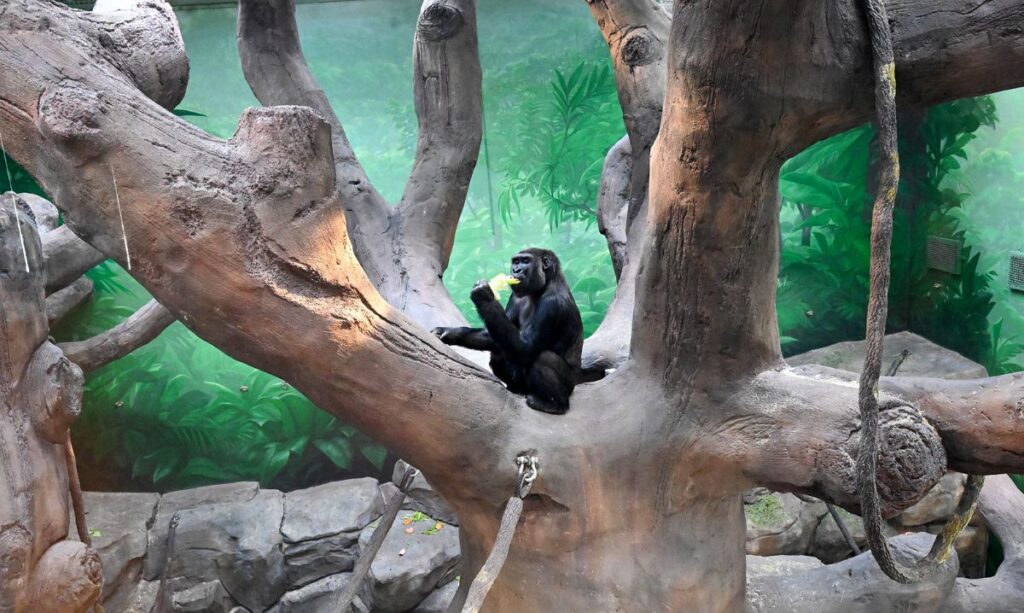It isn’t every day that a Midwestern city becomes home to one of the most ambitious rainforest recreations on the continent. But in 2025, the Chicago Zoological Society announced a transformative project at Brookfield Zoo: a $66 million investment to build a vast, immersive tropical forest environment. This major endeavor promises to blend conservation science, educational outreach, and immersive design into an unprecedented visitor experience.
The tropical forest project at Brookfield Zoo is not simply a new exhibit. It is a reimagining of what a zoo can and should be in the 21st century—a sanctuary for species survival, a living laboratory for climate awareness, and a deeply emotional journey into the epicenter of the world’s disappearing rainforests.
Origins: From Prairie to Jungle
Brookfield Zoo, located just west of Chicago, has long been a pioneer in zoo design. Opened in 1934, it was among the first to abandon traditional barred cages in favor of moated and more naturalistic enclosures. This progressive spirit has carried through decades of expansions, and now culminates in the tropical forest project.
The impetus for the new forest came from two converging crises: the global loss of rainforest ecosystems and the growing disconnect urban populations feel toward nature. The Amazon alone has lost millions of hectares to deforestation in recent decades. Meanwhile, children growing up in Chicago’s urban sprawl often lack meaningful encounters with wild spaces.
Brookfield Zoo’s leadership saw an opportunity to bridge this gap. By creating a hyper-realistic tropical forest, they could transport visitors into a world of giant kapok trees, shimmering bromeliads, hidden waterfalls, and the sounds of distant howler monkeys—all within an accessible suburban park.
Design: A Living Ecosystem
The $66 million project goes far beyond simply housing tropical animals under glass. It is conceived as an integrated ecosystem—a true forest rather than an exhibit.
The design includes towering canopy walkways, allowing visitors to experience life among the treetops, similar to the rainforest walkways in Costa Rica or Borneo. Below, winding ground-level trails weave through dense foliage, where guests encounter free-flying birds, reptiles, and mammals moving naturally in shared spaces.
Aquatic habitats simulate jungle streams and flooded forest floors, housing species like arapaima, caiman, and giant river otters. Misting systems regulate humidity and temperature to mimic equatorial conditions, ensuring both plant and animal residents thrive.
Key to this approach is planting living trees and plants rather than relying solely on artificial structures. Over 100 species of tropical flora are being cultivated, including rare orchids and epiphytes. These plants create microhabitats, support insect life, and contribute to the exhibit’s authentic scent and feel.
Animal Ambassadors: More Than Attractions
Central to the forest will be a carefully curated group of animal ambassadors, including sloths, tamarins, toucans, and an array of amphibians and insects. Rather than confining them to isolated enclosures, the forest is designed to allow controlled free-ranging behaviors.
This shift from “displaying” to “inhabiting” changes how visitors perceive zoo animals. It encourages respect for their agency and reminds us of their roles as active participants in ecosystems.
For example, small primates may climb above the heads of guests on suspended branches, while tropical butterflies drift through the undergrowth. The experience is meant to evoke wonder while subtly teaching interdependence and ecological balance.
Conservation Mission: Beyond Chicago
The Brookfield Zoo’s tropical forest is more than an attraction; it is an active conservation hub. Part of the $66 million budget supports field programs protecting rainforests in Central and South America.
Revenue from ticket sales and special memberships will help fund anti-poaching efforts, reforestation projects, and community education initiatives abroad. In partnership with global conservation organizations, Brookfield aims to create a feedback loop where local learning supports global action.
The exhibit will also act as a genetic resource center, with plans to house endangered species as part of international breeding and reintroduction programs. Species like the golden lion tamarin or the Philippine crocodile could find refuge here, bridging the gap between captive care and wild re-release.
Educational Programming: Growing New Stewards
A major pillar of the project is education. The zoo’s education department is developing a suite of immersive programs tailored to all ages.
Interactive stations along the forest paths will showcase hidden rainforest stories—like the symbiotic relationship between certain ants and acacia trees, or the fascinating mimicry of rainforest insects. Scheduled keeper talks and live demonstrations will provide insight into animal care and forest ecology.
For school groups, the exhibit offers guided tours that tie directly into STEM curricula. Students can conduct mini-field studies, observe animal behaviors, and learn about the carbon cycle in real time.
A dedicated classroom wing adjacent to the forest will host workshops, sleepover programs, and citizen science initiatives. The goal is not just to inspire curiosity, but to equip future generations with the tools and motivation to protect natural environments.
Architectural Challenges: Building a Forest in Illinois
Recreating a tropical rainforest in the variable climate of Illinois posed immense architectural and engineering challenges. Chicago’s winters can plummet below zero, while summers bring extreme humidity.
To maintain stable rainforest conditions year-round, the design team employed advanced climate control systems powered partially by renewable energy sources, including geothermal wells and rooftop solar arrays. Massive insulated glass panels and retractable shading elements regulate sunlight, while fog and misting systems recreate equatorial moisture.
Stormwater from the zoo grounds is harvested and filtered to maintain aquatic habitats, minimizing water waste and educating visitors about resource cycles.
Even construction materials were chosen with sustainability in mind. Reclaimed wood, recycled steel, and environmentally friendly composites feature throughout the structure, demonstrating a holistic commitment to green design.
Public Reaction: Anticipation and Debate
When the project was announced, it sparked a mix of excitement and critical discussion. Many lauded Brookfield Zoo for taking a leadership role in immersive conservation education, seeing it as a necessary evolution of traditional zoological spaces.
Critics, however, raised questions about the ethics of large-scale captive environments, the high costs, and whether such resources might be better spent directly in threatened habitats overseas.
Zoo leadership responded by emphasizing the “both/and” approach: supporting wild habitats abroad while providing transformative educational experiences at home. They argue that inspiring millions of visitors to care about rainforests can catalyze broader societal support for global conservation.
Community Engagement: Local Roots
Brookfield Zoo’s commitment to the community is deeply woven into the tropical forest project. Local artists and Chicago-based horticulturists have been involved in designing interpretive art installations and plant selections.
Neighborhood schools were invited to submit drawings and ideas, some of which will be incorporated into educational signage and murals. Volunteer programs have also expanded, with hundreds of Chicagoans training to serve as exhibit docents, greeters, and support staff.
Special preview events for local residents and members build excitement while fostering a sense of ownership and pride. The zoo’s plan to offer free admission days ensures accessibility, aiming to reach families who might not otherwise afford such immersive experiences.
The Broader Zoo Landscape: Shifting Paradigms
Brookfield’s ambitious project mirrors a broader trend in modern zoos worldwide, shifting from entertainment-centered collections to immersive biomes emphasizing conservation and ecological storytelling.
Institutions like the Singapore Zoo’s Rainforest Fragile Forest or the Eden Project in the UK have pioneered this model. However, Brookfield’s scale and its combination of immersive experience with direct conservation funding set it apart as a potential model for North American zoos.
By merging habitat simulation, education, and international conservation, this project represents an evolution of the zoo as a cultural institution—one that holds the potential to reshape public consciousness about humanity’s relationship with the natural world.
Future Impact: Seeds of Change
Beyond its immediate visual and experiential impact, the $66 million tropical forest could have profound ripple effects. By offering a visceral, emotionally engaging encounter with rainforest life, Brookfield Zoo hopes to nurture future conservationists, biologists, and environmental advocates.
If the tropical forest can inspire even a fraction of its millions of visitors to change habits, support conservation legislation, or contribute to rainforest protection efforts, its true value will extend far beyond Chicago’s borders.
Moreover, the research and horticultural innovations developed during this project may inform other urban green spaces, botanical gardens, and even public architecture, weaving rainforest lessons into the fabric of future cityscapes.
Flow
Walking through Brookfield Zoo’s future tropical forest, visitors might hear the dripping of simulated rain, the low croak of a hidden frog, or the sudden rustle of a monkey overhead. They might inhale the thick scent of earth and orchids, or see a toucan flash between branches.
In those moments, the barriers between Chicago and the Amazon dissolve. The forest becomes not a distant, abstract concept, but a living, breathing presence—one that commands reverence and demands action.
The $66 million price tag, while staggering, represents more than an infrastructural investment. It symbolizes a profound cultural wager: that by opening hearts to the magic and fragility of rainforests, we can plant seeds of stewardship that might just help save them.
Ultimately, Brookfield Zoo’s tropical forest is a testament to hope—hope that immersive education can bridge divides, that lush experiences can transform urban minds, and that in the battle for the world’s wild places, wonder remains one of our most powerful allies.
No comments yet.









